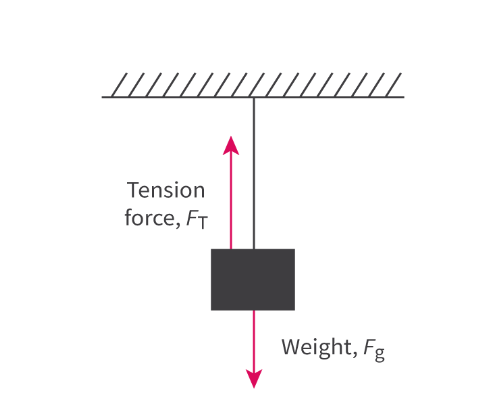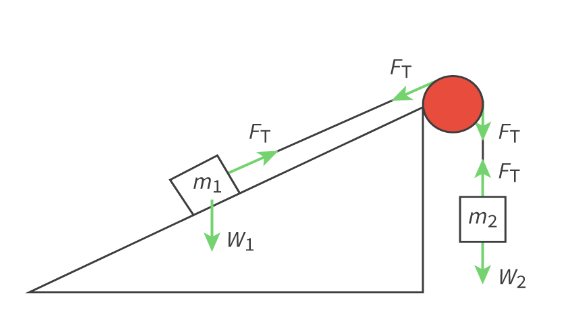What is Tension?
- When a force is acting upon on a rope (or any object) from both sides, the rope experiences tension.
- Tension is a restoring force, which means it always acts opposite to the force pulling against it.
- Tension force is equal throughout the rope and pulls against both sides pulling it.
Examples
Example 1
- If you attach a wire to a wall and then pull against it, you'll be applying a force on the wire.
- Yet the wire doesn't move.
- This is because the wire is pulling back with the same force that you're pulling it!
- However, the wire is also pulling against the wall with the same force.
- Let's say the wire breaks off the wall.
- Now the wire is no longer being pulled from both sides, and thus there's no tension force holding you in place, resulting in you hurtling backwards as there's now only the force you're pulling the wire with.
- The same thing applies the other way around if you suddenly let go of the wire.
- Now there's only the force of the wall pulling the wire and the wire snaps back towards the wall.
Example 2
- The image below shows a ceiling lamp.
- The cord is pulled down by the weight of the lamp and experiences tension and pulls down on the ceiling and pulls the lamp up, preventing the lamp from falling down.

Example 3
- Tension force can be utilized in pulleys, which are the mechanisms that for example, make elevators work.

- In this image, there is a block on a slope, and another being lifted by a pulley.
- In this situation, the blocks are in equilibrium and there is no movement.
- However, lets say you want to pull m₂ upwards.
- Without a pulley you'd have to pull up the weight W₂, as well as the force to lift the block up.
- However, now that there's the pulley, the rope is already lifting the block up, as the tension force Fₜ must equal to W₂ for the system to be in equilibrium.
- Now to lift up the block, you only need to lift with the force to lift the block up, as the rope is already holding the block in place!

